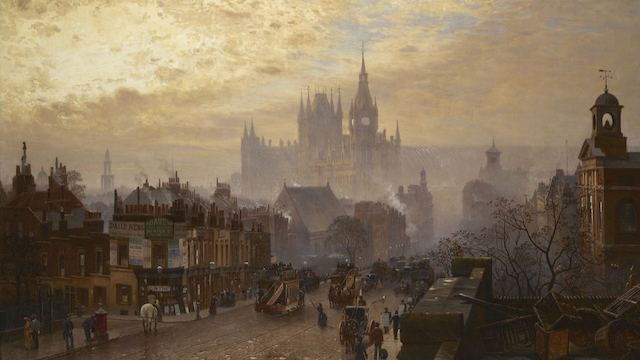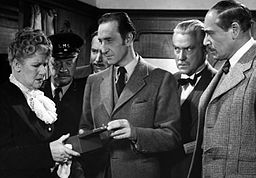
The Whole Art of Detection
by Lyndsay Faye
Mysterious Press (March 2017)
388 p. ISBN 9780802125927
Publisher’s Summary
Internationally bestselling author Lyndsay Faye was introduced to the Sherlock Holmes mysteries when she was ten years old and her dad suggested she read Sir Arthur Conan Doyle’s short story “The Adventure of the Speckled Band.” She immediately became enamored with tales of Holmes and his esteemed biographer Dr. John Watson, and later, began spinning these quintessential characters into her own works of fiction—from her acclaimed debut novel, Dust and Shadow, which pitted the famous detective against Jack the Ripper, to a series of short stories for the Strand Magazine, whose predecessor published the very first Sherlock Holmes short story in 1891.
Faye’s best Holmes tales, including two new works, are brought together in The Whole Art of Detection, a stunning collection that spans Holmes’s career, from self-taught young upstart to publicly lauded detective, both before and after his faked death over a Swiss waterfall in 1894. In “The Lowther Park Mystery,” the unsociable Holmes is forced to attend a garden party at the request of his politician brother and improvises a bit of theater to foil a conspiracy against the government. “The Adventure of the Thames Tunnel” brings Holmes’s attention to the baffling murder of a jewel thief in the middle of an underground railway passage. With Holmes and Watson encountering all manner of ungrateful relatives, phony psychologists, wronged wives, plaid-garbed villains, and even a peculiar species of deadly red leech, The Whole Art of Detection is a must-read for Sherlockians and any fan of historical crime fiction with a modern sensibility.
General Review
Having been a fan of Faye’s work since she published Dust and Shadow, I expected to enjoy this book, and was thrilled to receive an ARC from NetGalley. What I did not expect was just how MUCH I enjoyed the book. Faye has a grasp of Watson and Holmes’ partnership that few authors manage to bring to life on the page in quite the same way. Here we see playful teasing, uproarious arguments, protectiveness and fondness, and a way of interacting that can only come about from decades of knowing each other.
The book is divided into four sections: Before Baker Street, in which Holmes or Watson tell a story to one another about a case they had before they met; The Early Years, which all take place before the Hiatus; The Return, which takes place in the immediate aftermath of the Hiatus; and The Later Years, which cover the years leading up to Holmes’ retirement.
Before Baker Street will bring to mind Gloria Scott and Musgrave Ritual. Even though either Holmes or Watson is absent from the mystery, however, they are very present within the story itself, either interjecting questions or asides, commenting on the action, or needing to take a break in order to adjust a blanket or eat some food. If one looks at Gloria Scott or Musgrave Ritual and misses Watson, then that shouldn’t be a concern here. He also presents his own case to Holmes, in a delightful turn of events.
The Early Years gives us four cases in which we explore the tentative beginnings to the friendship between Watson and Holmes. Faye is very aware that these stories take place before they were truly comrades-in-arms the way we think of them, and so she shows the gradual blossoming of their friendship as we go through. We are shown here vulnerable and deeply compassionate sides to Holmes, while Watson’s pawky humor comes through quite clearly, as well as his bravery and willingness to pursue justice. My favourite story in the entire collection, the Gaskell Blackmailing Dilemma, is in this section. This story takes place during HOUN, while Holmes is still in London, and is drawn entirely from Holmes’ journal entries… in which he rambles about Watson, rants about Watson, and worries about Watson. If you’ve ever wondered just how Holmes feels about Watson, or worried that he didn’t value the friendship, this story will put such fears to rest. It is a gem.
The Return, with most stories all taking place immediately after EMPT, focuses on the consequences of Holmes’ actions, and is possibly the bleakest of the four sections. The first story in the group is heart wrenching, with Mary Watson having just died and Watson not knowing what to do anymore. In the other stories, Holmes and Watson have to work through the emotional quandaries that arose from the Hiatus and, in The Willow Basket, we get to see just what Lestrade’s take on the whole thing is. Despite this being perhaps the saddest section, it is still immensely satisfying, and really gives weight to the Hiatus as a whole.
The Later Years feature your classic pastiches, with the focus truly being on the cases themselves. At this point, Holmes and Watson have largely sorted out any rocky patches in their friendship, and these are some of the years Watson claimed Holmes was at the height of his powers in Canon; the mysteries are, suitably, excellent.
Most of the stories in this collection feature an A plot, which focuses on the mysteries at hand, and a B plot, examining a facet of the relationship between Holmes and Watson. If the mysteries are at times predictable, it is the B plots that make this book a standout. It is an amazing collection, and you will want to have it on your shelf.
What About Our Watson?
The Watson that appears here is everything a good Watson should be: he’s loyal, he’s clever, he’s an excellent doctor, he’s brave and resolute, he’s funny, and he’s protective. The stories are told in a classic pastiche style, very reminiscent of Canon, but we are lucky here in that Watson isn’t edited out as much. He doesn’t come back into the story just to ask a question so that Holmes will explain something; instead, he is as much a part of the process of detective work as Holmes himself. His medical experience is featured heavily in these stories, in particular as Holmes’ doctor. Two stories, Colonel Warburton’s Madness and An Empty House feature Watson alone, with very little Holmes, and so we get experience a slightly difference view on him, unrelated to case work.
Perhaps the two best stories, however, for showcasing our Watson are the two stories that are drawn from Holmes’ notes. These are not done in the style of Lion’s Mane or Blanched Soldier, with Holmes attempting to write his own story. Instead, these are unfiltered, raw Holmes, straight from his journals, and so the Gaskell Blackmailing Dilemma and The Diadem Club Affair show us exactly how Holmes sees his friend, and, more importantly, gives us an unedited view on what Watson is truly like, without his authorial hand adjusting things. Watson is steadfast and gentle, brave and bullheaded, sarcastic and intelligent. It’s a brilliant portrayal, and immensely satisfying for a Watsonian.
You Might Like This If You Like:
Bert Coules radio dramas; friendship stories; the tin box mysteries with new plots; classic pastiche collections







 Scott Monty, JHWS “Woolley”, and Burt Wolder, JHWS “Taylor”, have launched a brand-new podcast called
Scott Monty, JHWS “Woolley”, and Burt Wolder, JHWS “Taylor”, have launched a brand-new podcast called 
 Sherlock Holmes and the Eisendorf Enigma
Sherlock Holmes and the Eisendorf Enigma